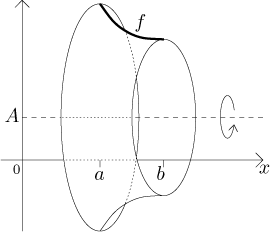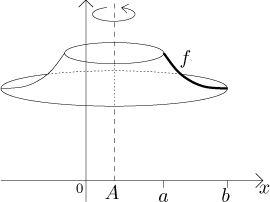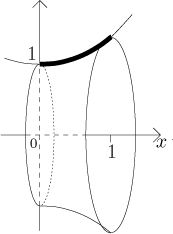
Consider the graph of a function f on an interval
If we rotate this graph around a horizontal axis of rotation given by

the surface area of the resulting surface is given by
![]()
If we rotate this graph around a vertical axis of rotation given by

the surface area of the resulting surface is given by
![]()
More complicated surfaces have to be decomposed into surfaces of the above type.
Example: Consider the graph of
Solution: We start with a picture:

The axis of rotation is given by

Consider a parametric curve

The surface area of the surface obtained by revolving this curve about a
horizontal axis of rotation given by
![]()
The surface area of the surface obtained by revolving this curve about a
vertical axis of rotation given by
![]()
Mass and centre of gravity
Back to Methods Survey
- Applications